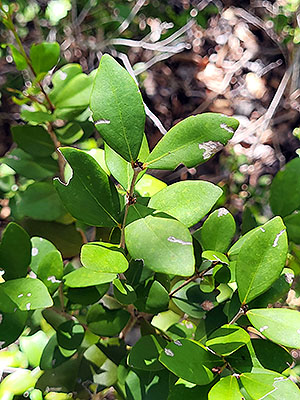Minguet’s Eugenia (Eugenia minguetii)
Minguet’s Eugenia is, or maybe was, endemic to the Massif du Nord, Haiti on the island of Hispaniola.
The area is subject to ongoing heavy deforestation and the plant, which was last seen in 1924, may well already be extinct.
***
The photo below shows a closely related yet far mor widespread species, the Boxleaf Stopper (Eugenia foetida Pers.) which is also found in some regions of Haiti.
*********************

Photo: Juan Gabriel
https://www.inaturalist.org/people/juan_7
https://creativecommons.org/licenses/by-nc/4.0/
*********************
edited: 11.02.2024

